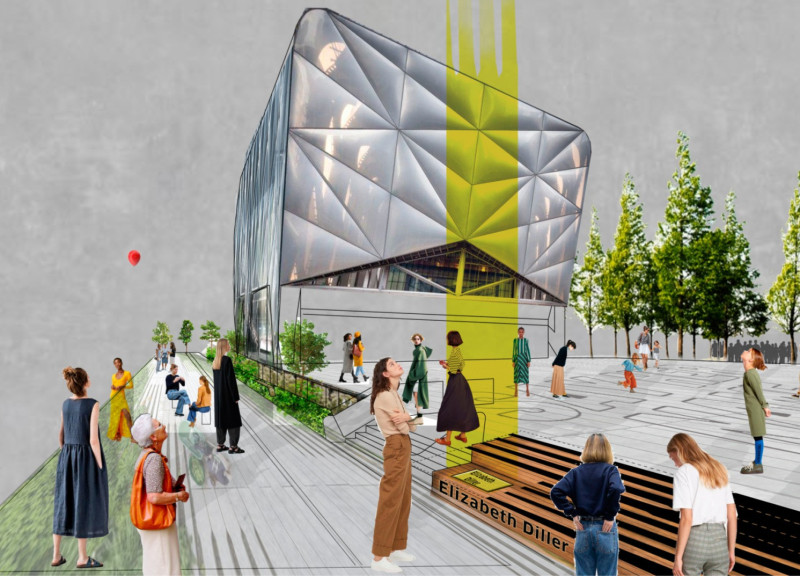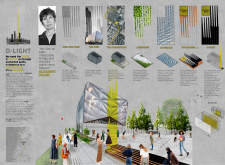5 key facts about this project
At its core, D-Light serves multiple functions that align with its purpose of enhancing public space. It is designed to be a multifunctional area that invites passersby to stop, engage, and interact with their environment. The project offers seating areas, gathering spaces, and zones for artistic displays, making it adaptable to various events and uses. This multifunctionality is crucial for urban environments, where flexible spaces foster interaction and creativity among diverse populations.
One of the notable aspects of D-Light is its emphasis on light, both literal and metaphorical. The design integrates features that allow for the manipulation and reflection of natural light, creating a dynamic atmosphere that changes throughout the day. The play of light is not merely an aesthetic consideration; it serves as a tool for wayfinding and orientation within the space, helping users navigate and experience the area more fully.
The unique design approach of D-Light is evident in its interaction with the surrounding landscapes, particularly the High Line. The project thoughtfully integrates elements of landscaping, utilizing greenery and natural features to create a seamless transition between architectural structures and the park setting. The careful selection of materials, including glass, steel, and wood, emphasizes sustainability while enhancing the visual and tactile experience of the space. Each material has been chosen for its properties and contribution to the overall design narrative, reinforcing the project’s intention of harmony with nature.
Central to the project's design is an innovative public bench that reflects light and serves as a gathering point for people. This bench invites users to sit, relax, and engage in conversation, thus facilitating social connections in an urban context. It serves as both a functional element and an interactive installation, encouraging people to reconsider how public furniture can contribute to their experience of space.
The design of D-Light aligns with modern architectural ideas that prioritize community engagement and sustainability. It seeks to break down barriers between the structure and the surrounding environment, demonstrating that architecture can enhance social interaction. By drawing on the principles of inclusivity and accessibility, the project strives to welcome visitors from various backgrounds and ages, making it a true public asset.
Furthermore, D-Light’s contextual design reflects a sensitivity to its urban setting, creating a dialogue with adjacent structures and the natural environment. This thoughtful integration of architecture and landscape promotes biodiversity and ecological awareness, reinforcing the importance of sustainable practices in contemporary design.
Exploring architectural designs like D-Light allows for a deeper understanding of how public spaces can be shaped to foster human connection and interaction. For those interested in the intricacies of this project, reviewing the architectural plans, sections, and detailed designs will provide valuable insights into the thoughtful considerations that went into its development. The D-Light project exemplifies how architecture can thoughtfully engage with its environment while promoting a vibrant community, encouraging further exploration of its various dimensions and design philosophies.























